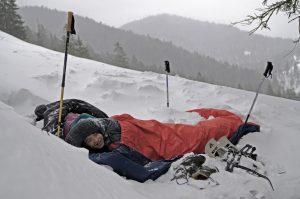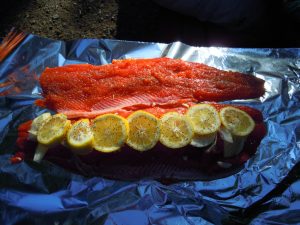It’s important to have an idea of why you are going camping. Are you going to get some peace of mind or are you going for the physical challenge it might offer? Will you be gone for long or are you planning on getting back in a few days? There are different types of preparations to make depending on what you intend to get accomplished during your camping experience.
If you are going for a few days, lighters are probably a sufficient fire source and you basically just need some sort of sleeping bag or thick clothing to manage the cold Scandinavian nights. A longer trip however, requires mental preparations but you also need to bring other items. So, first of all, make up your mind on what you plan to accomplish with your camping trip.
A Smart Head
In order to stay warm, you need to take multiple factors into consideration. You need to consider the potential effects from wind, rain and cold. You also need to bring a pair of extra clothing, your clothes can quickly get wet from a simple mistake or by the harsh powers of nature. It’s worth mentioning that it’s quite easy to get holes in clothes from just walking around in the wilderness.
Especially if you are collecting firewood or other pointy items that could pierce the clothes. Take all the required measurements to stay warm at all times, including a sensible way to act in nature. It’s very easy to stress out over every small little incident, but remember that you went on your trip for the outdoor experience so remain calm and believe that you will make it back alive. Bring a sharp and healthy head.
Boots
I’ve written another article about what kind of boots you might need on your camping trip, feel free to check it out!
Ultimately, you can make the most of it if you know what you want to get out of your camping experience. Boots are extremely important if you are going on a cold winter hike in deep snow, but daytrips in the summer doesn’t really require any particular boots.
You can easily stay warm throughout the Scandinavian summer with sneakers or barefoot, as the midnight sun makes the forest so much warmer. The sun actually never sets completely if you are in the northern Scandinavia between June-August. During this period, the sun never sets fully beyond the horizon – it merely dips. The dip of the sun doesn’t result in a dark sky, instead you have a bright sky without sun. If you go in the winter, bring some warm boots but make sure that they are water resistant too.
Source of Fire

Camping is lovely, but camping without fire can cost you toes, fingers and even your life if you aren’t cautious. We humans have mastered the fire since ancient times but bringing it into the wild might be harder than what you are used to.
A regular lighter is an easy solution, but lighters tend to break on these trips. The gas in lighters can quickly be spent if your collected wood is cold and wet/frozen. Make sure to bring a kindle if you are going for a longer trip, also bring tinder – small pieces of wood that can spark up faster than cold forest wood.
Tinder is usually just needed to get a fire started, so try to gradually add bigger and bigger logs as the fire continues to grow. Potato chips works well as a substitute to tinder.
Wilderness Clothing

Being fashionable allows you to be pretty, while practical factors help you to survive. It’s very easy to underestimate the weather conditions of any geographic region; many look at average weather conditions to have an idea of what is to be expected.
I always try to set my expectations from reading up on the worst possible weather conditions of a region before I go there to camp. Camping in the wildlife is a way for me to be tested by nature, so extreme conditions are just as educational as challenging.
Preparing for the worst conditions will make you over prepared for average conditions of the region, you just found an edge against nature! How would snow storms or whipping winds affect you and your gear? Feel free to hope for the best but always prepare for the worst.
Food at camp

Good job friend, you finally found a source of food. What is the next thing to do with it? Well, you probably need something to prepare the food in a pot or similar. In case you got more food than what you plan to eat on a day, make sure to bury it or hang it up in a high tree branch.
The bears probably have the best smell among mammals, it is believed to be roughly 2100 times better than us humans. Bears will quickly find your fish and meat unless you make it inaccessible to them, in a tree for example. Try to only bring the eatable nutrients with you back to your camp as you want to avoid having meat/blood scents around your camp.
The food that you eat usually has to be cooked, regardless of what you eat. A pot can therefore be an extremely essential asset as it also allows you to boil water that you can drink on later occasions. There are multiple different ways to prepare an outdoor kitchen, although it’s far from the same thing as using a gas/electricity kitchen. In case you’d need inspiration on what types of food to cook while camping, please have a look at these 5 Food Tops for Camping and Hiking.
Small Necessities

You can pack blankets, pillows and other big items if you wish but they will take up all the space in your bag/backpack. You might consider bringing some sort of thin rope/strings and tarp to help you build up a camp quick without a tent.
Thin rope can be valuable if you want to give fishing a go too. A fishing rod is too fragile and big to bring, all you need is a wooden stick and a slim rope to tie to your homemade hook. A spoon might be a good thing to bring too, as you probably want to eat your food while it’s hot. Without a spoon, you need to wait for your food to cool off before you can start eating = less heat into your body.
